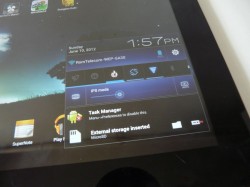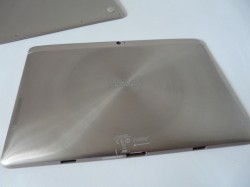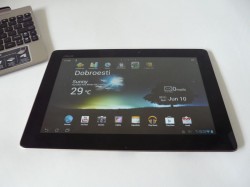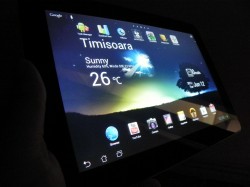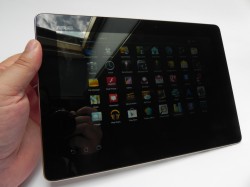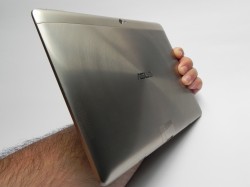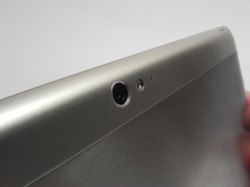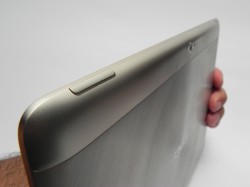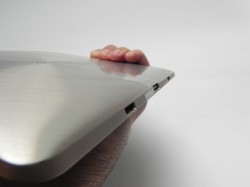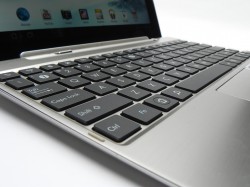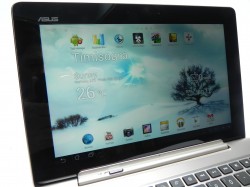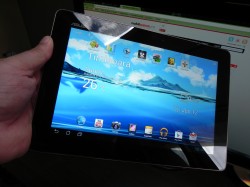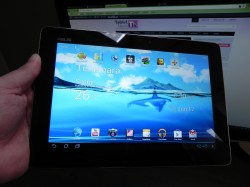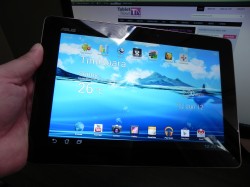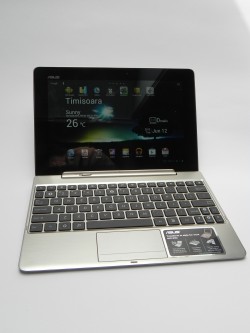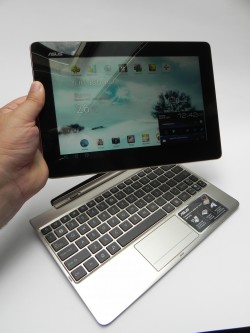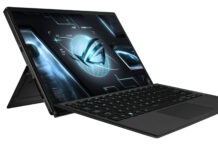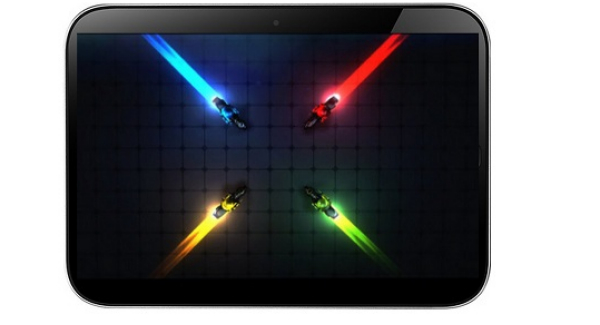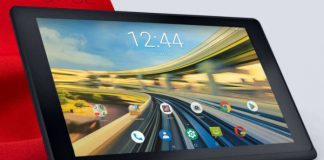Remember the teaser we’ve shown you last month? Well, as some of you guessed, it was the ASUS Transformer Pad Infinity that reached us for review purposes. Now, the review time is here and you can read all about the first Full HD Android tablet right here. There’s also a full HD Acer tablet out there and when I say first, I mean the first full HD model that came to us. So, let’s see what the Infinity Pad is all about!

For one thing, this model was showcased at MWC 2012, where we played with it for a bit in a brief hands on experience. Also, you should know that the Transformer Pad Infinity costs around $700 – $800 and it should be available in July/August, if delays don’t happen. The slate is also known as the “upgraded Transformer Prime” and that’s a pretty good definition, since it adds a new case, a better front camera, slightly upgraded CPU and better screen resolution to the original Prime. The rest is pretty much the same.
We’re dealing with a very slim device, that measures 8.5mm in thickness, weighs 586 grams and has all the ports and slots one needs. There’s a proprietary port on board, a micro HDMI, a microSD card slot and on the keyboard dock you’ll find a full USB port and an SD card slot. The tablet is covered with brushed aluminium and the keyboard also weighs around 500-600 grams. ASUS Transformer Pad Infinity 700 comes with a Super IPS+ LCD display, with a 10.1 inch diagonal, with a 1920 x 1200 pixel resolution and Corning Gorilla Glass 2 protection.
I must also note that the speaker placement at the back is not the most inspired, since you can easily cover it with your hand or when placing the slate on a flat surface. Other specs include 64GB of storage, 1GB of RAM, plus ASUS WebStorage (in the cloud), WiFi, Bluetooth 4.0 and an 8 megapixel camera at the back, with autofocus, LED flash, geotagging. At the front there’s a secondary 2MP camera, up from the 1.2MP sensor on the Prime. The brain of the new tablet is a quad core Nvidia Tegra 3 T33 1.6 GHz processor and hardware also includes an accelerometer, gyroscope, compass and a Li-Po 25 Wh battery, that gives you around 10 hours of functioning time or 15 with the dock attached.
Keep in mind that the tablet will also have a 3G/4G version, that will replaced the Tegra 3 CPU with a 1.5 GHz dual core Qualcomm Snapdragon S4 unit, more adapted for use of the device on LTE networks. This is an Android 4.0 ICS tablet, meaning that it has a common widgets and apps area, a multitasking area with swiping to close apps and the usual Settings zone in the lower right portion. The OS works flawlessly, as shown in the video review below. The slate stands out through a very bright display, with 600 nits of brightness, so the video playback looks great even in direct sunlight.
On the benchmark front, we scored 4600 points in Quadrant, compared to the 4000+ Prime of the Prime and 3700 of the ASUS Transformer Pad 300. Also, we scored 11.600 points in AntuTu, compared to the 5029 of the Samsung Galaxy Tab 2 10.1, the 10.000 of the Prime and the 9000 of the Pad 300. Finally, we only scored 34.6 FPS in NenaMark 2, compared to the 46 FPS of the Prime, but I blame this on the superior quantity of pixels that need to be put into motion by the CPU/GPU, because of the Full HD resolution.
Video playback is great, audio playback is loud and clear and we have a ton of options to modify the audio experience. The camera uses a 5 element lens and delivers some pretty decent pics and video. It really felt like one of the best cameras I’ve seen on the tablet and clearly better than the camera on the iPad 3. Both the virtual keyboard and the physical one brought by the keyboard dock are comfortable and the touchpad area is also easy to use. Docking in is a breeze and thanks to the USB port you can attach extra accessories like a joystick, for example.

Among the apps bundled with the tablet there’s the SuperNote, for taking notes, drawing, integrating pictures, videos, recordings and whatnot. There’s also the MyZine widget, that gathers together the last website you visited, the last song you played, weather, emails and a small Settings section. In the Settings area, in the lower right end of the screen, where notifications appear there are 3 special settings for the functioning mode of the tablet: Performance, Balanced and Power Saving. These influence the image quality of the screen, brightness and use of CPU. There’s also the Super IPS+ outdoor option, for extra screen power when using the device outdoors.
And now for the verdict, this tablet gets a 9.5 out of 10 for its metallic, elegant design, a 9 for very good hardware and a 9 for UI and OS. It’s a total of 9.16 out of 10 for the best Android tablet I’ve tested this year. I’m sure that the price will go down and around Fall or winter you’ll buy a very good tablet if you choose the Infinity Pad.
[youtube NqQ9CXjl8Uk 660 520]
Post Footer automatically generated by Add Post Footer Plugin for wordpress.




